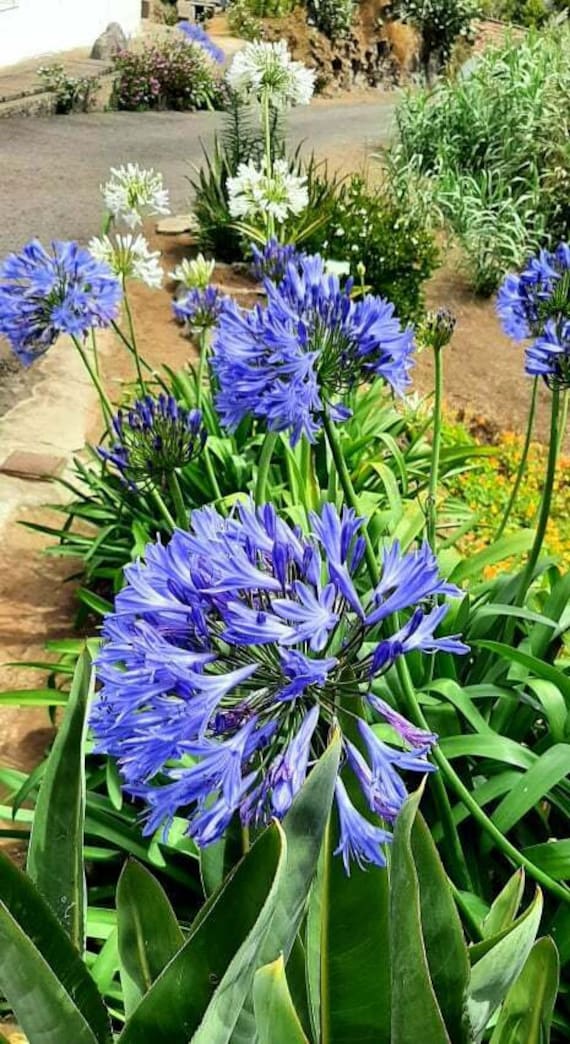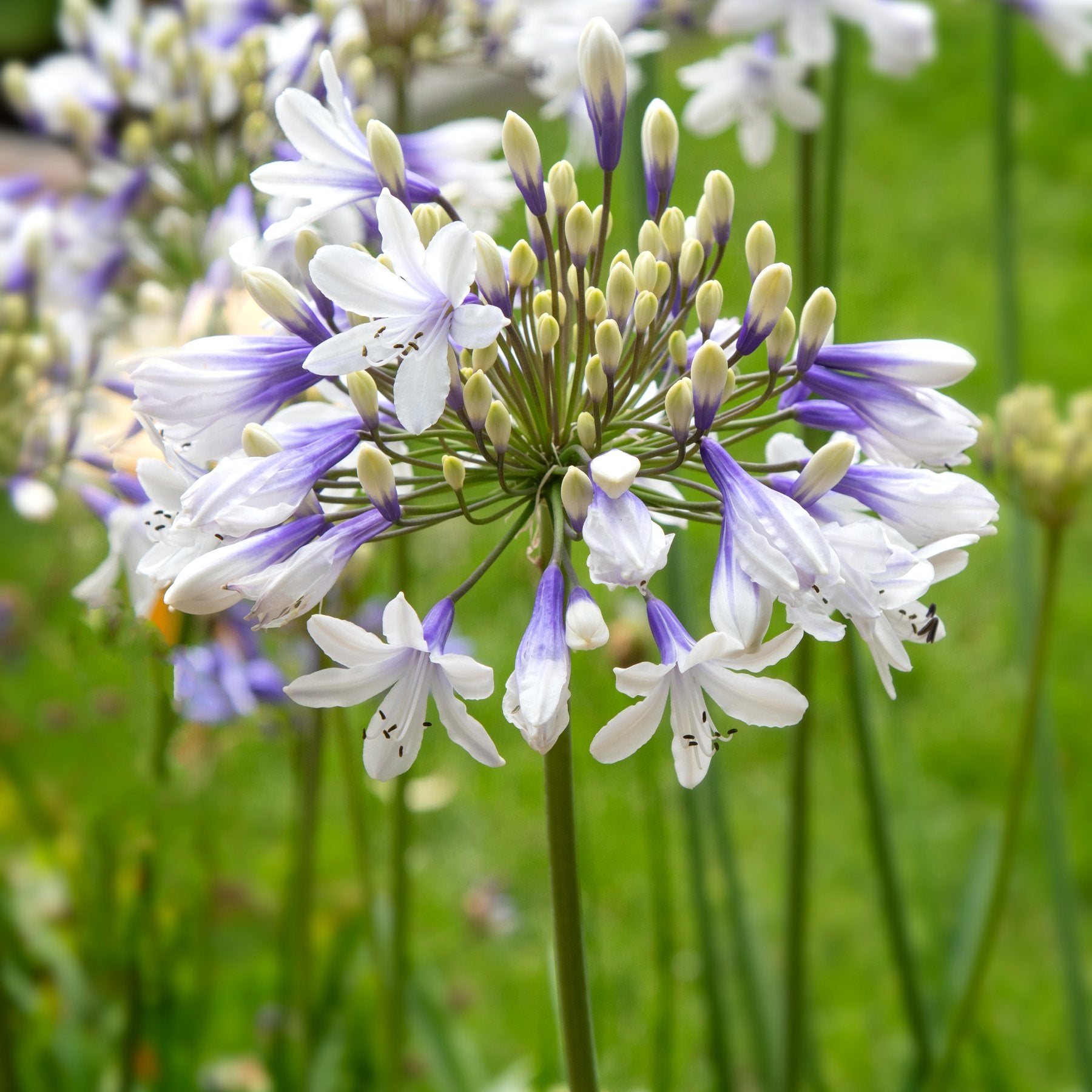Grasping the Art of Agapanthus Treatment: Necessary Steps for Healthy And Balanced Development and Lively Blooms
In the world of horticulture, the cultivation of agapanthus stands as a satisfying venture for those who seek to support these classy blooming plants. From selecting the appropriate range to grasping pruning strategies, the trip in the direction of cultivating growing agapanthus plants is multifaceted and holds the vital to unlocking the complete capacity of these herb gems.

Choosing the Right Agapanthus Selection

When selecting the best Agapanthus range for your yard, think about factors such as climate viability, bloom shade, and development practice. Agapanthus, typically known as Lily of the Nile or African lily, is available in a variety of colors ranging from shades of blue and purple to white. Select a bloom shade that enhances your existing yard palette to produce an unified landscape. In addition, take into consideration the climate in your area to make certain the Agapanthus variety you select can thrive in your details problems. Some selections are more tolerant of chilly temperature levels, while others choose warmer climates. Comprehending the growth habit of various Agapanthus selections is important for proper placement within your garden. Some selections have a clumping development behavior, suitable for containers or boundaries, while others have a more spreading nature, appropriate for ground cover or mass plantings. By meticulously reviewing these variables, you can choose the ideal Agapanthus range to boost the charm of your yard.
Perfect Planting Conditions
Thinking about the ideal environmental requirements is necessary for effective Agapanthus farming. Agapanthus grows in well-draining soil with a slightly acidic to neutral pH level. When growing, choose an area that gets full sunshine to partial color. In hotter climates, supplying some mid-day shade can protect against scorching of the leaves. Agapanthus plants are sensitive to cold temperatures and must be shielded from frost during cold weather.
To make certain healthy development and lively flowers, plant Agapanthus bulbs at a deepness of regarding 2-4 inches and space them 8-12 inches apart. Adding natural matter, such as garden compost, to the dirt can improve drainage and fertility, advertising durable origin growth. Mulching around the base of the plants assists preserve dampness and suppresses weed development. Routine watering is essential, particularly during the expanding period, to keep the soil continually wet but not waterlogged.
Watering and Feeding Tips
Keeping correct moisture degrees and providing necessary nutrients are key components in the treatment program for Agapanthus plants. When it comes to watering Agapanthus, it is crucial to strike an equilibrium. These plants prefer regularly wet dirt however are susceptible to root rot if overwatered.
Feeding Agapanthus is important for advertising healthy growth and prolific blooms. Apply a well balanced plant food, such as a 10-10-10 formula, in the very early spring as brand-new growth arises. Repeat this application every 6-8 weeks throughout the growing season. Prevent too much fertilizing, as it can cause lavish vegetation at the expense of blossoms. Always follow the producer's guidelines for appropriate dilution and application methods. By adhering to these watering and fertilizing suggestions, you can ensure your Agapanthus plants prosper and produce dynamic, long-lasting blossoms.
Pruning Strategies for Agapanthus
Trimming Agapanthus plants at the proper times and with appropriate strategies is critical for preserving their health and advertising ideal growth and flowering. The perfect time to prune Agapanthus is in late winter months or very early spring before brand-new growth arises. Begin by getting rid of any type i was reading this of yellowing or dead fallen leaves near the base of the plant. Cut them as close to the ground as possible without damaging the arising shoots.
For flowered stems, wait up until the blossoms have perished and then cut them back to the base. This not only cleans up the plant's look but additionally motivates the advancement of brand-new flower buds. Deadheading invested blossoms can likewise reroute the plant's energy right into creating even more blossoms instead of setting seeds. However, if you desire to collect seeds for propagation, leave some blossoms to fully grown and dry on the plant.
Keep in mind to make use of clean, sharp tools to make precise cuts and lower the risk of presenting diseases. Agapanthus. Regular trimming will certainly aid keep your Agapanthus looking healthy and neat while making sure a bountiful display of beautiful blossoms
Dealing With Typical Parasites and Illness
After guaranteeing appropriate trimming techniques for Agapanthus, it is important to resolve common pests and illness that can influence the wellness and vitality of these plants. Agapanthus plants are typically sturdy yet can still succumb particular concerns. One common insect that impacts Agapanthus is the Agapanthus gall midget. This little, orange fly lays its eggs in the vegetation, causing distorted growth and flower buds that stop working to open. To combat this parasite, prune and destroy any afflicted plant components and take into consideration using insecticidal soap.
One more common issue is fungal leaf area, which provides as dark lesions on the leaves. To stop fungal diseases, make certain great air circulation around the plants, avoid overhanging watering, and get rid of any type of infected fallen leaves promptly. Furthermore, Agapanthus plants can suffer from origin rot if they are planted in badly draining pipes dirt. To prevent this, plant Agapanthus in well-draining soil and stay clear of overwatering. By being attentive and taking punctual activity against diseases and insects, you can aid your Agapanthus plants prosper and create vibrant blossoms.

Conclusion
Finally, mastering the art of agapanthus care entails selecting the appropriate range, supplying excellent planting conditions, correct watering and feeding, ideal pruning techniques, and dealing with usual insects and conditions. By following these essential steps, you can make sure healthy growth and dynamic blossoms for your agapanthus plants. Bear in mind to regularly monitor and maintain your plants to promote their total wellness and longevity.
To make certain healthy and balanced growth and vivid blossoms, plant Agapanthus light bulbs at a depth of why not try here concerning 2-4 inches and room them 8-12 inches apart. By adhering to these watering and feeding suggestions, you can guarantee your Agapanthus plants thrive and generate lively, resilient flowers.
One common pest that influences Agapanthus is the Agapanthus gall midge. Additionally, Agapanthus plants can endure from root rot if they are planted in poorly draining pipes dirt. By complying with these essential steps, you can make certain healthy growth and lively blossoms go to website for your agapanthus plants.